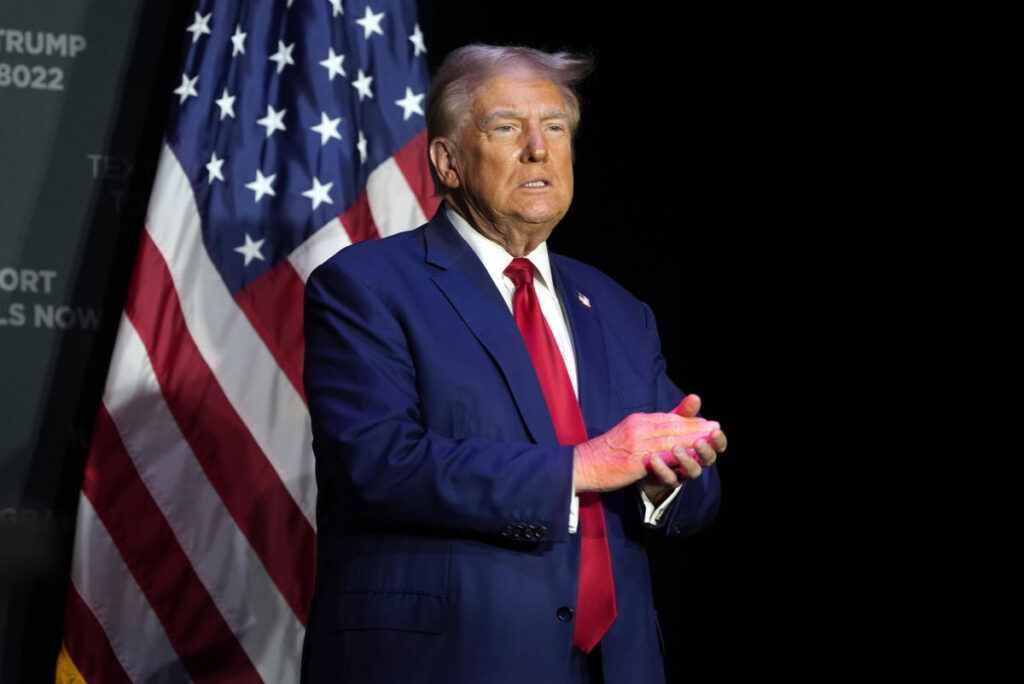Donald Trump’s heightened focus on Wisconsin, evident through his fourth rally in just eight days, underscores the growing concern among Republicans regarding his ability to galvanize the same level of enthusiasm and turnout that Democrats have successfully achieved. Veteran Republican strategist Brandon Scholz remarked on the apprehension surrounding Trump’s prospects, noting that he himself is not inclined to vote for Trump or the Democratic nominee, Kamala Harris, in the upcoming election. As both parties gear up for a competitive presidential race, the stakes are particularly high in Wisconsin, a traditionally swing state that has fluctuated in its political leanings over the past decades.
The latest rally took place in Juneau, Dodge County, where Trump previously won a significant majority in 2020. Local Republican Party chair Jack Yuds highlighted an increase in Trump’s popularity compared to past elections, indicating a robust demand for Trump merchandise. Wisconsin remains a pivotal battleground with an unpredictable voter base; it has only supported Republicans once in the last 40 years. Trump’s narrow win over Hillary Clinton in 2016 and subsequent loss to Joe Biden in 2020 by even fewer votes showcases the potential for razor-thin margins in the impending election.
In an effort to mobilize voters even from traditionally Democratic areas, Trump’s campaign recently marked his inaugural visit to Dane County, which includes the liberal stronghold of Madison. This county, significant for its size and growth, provided over 75% of its votes for Biden in 2020. Republican former Governor Scott Walker emphasized the importance of a comprehensive strategy across all 72 counties in Wisconsin to secure a statewide victory. The Republican Party’s focus on outreach resonates in their campaign methods, as they aim to penetrate stronghold areas that are typically resistant to Republican candidates.
Financial support for advertising has notably leaned towards Trump, with $35 million spent by his campaign and related groups compared to $31 million for Harris and her backers since her candidacy announcement. However, the Harris campaign has booked more advertising time in the final lead-up to the election, emphasizing a dual strategy of persuasive outreach and establishing a robust ground game across the state. Harris’ campaign, operating with over 250 staffers and 50 offices in Wisconsin, contrasts with Trump’s 40 offices, reflecting differences in resource allocation and voter engagement strategies.
Both candidates have directed their focus on key battlegrounds like Wisconsin, Michigan, and Pennsylvania, states that previously flipped in the 2016 election. Despite the enthusiasm surrounding Trump’s campaign, his team acknowledges the significant challenges posed by Wisconsin’s political landscape, with campaign senior adviser Chris LaCivita characterizing it as a historically close race that would likely stretch into the final days of campaigning. The organizational strength compared to four years ago, while viewed positively, does not diminish the competitive nature of the upcoming election.
With polling data suggesting a near-even race between Trump and Harris, the emphasis remains on drawing in infrequent voters who could ultimately tip the scales. Political strategists emphasize that the effectiveness of campaign efforts is significantly tied to turnout rather than merely the number of rallies or events held by candidates. As both candidates ramp up their efforts in Wisconsin, the political dynamics disclose an impending showdown with heightened stakes, where even a slight shift in voter sentiment could dictate the outcome of the presidential election.

